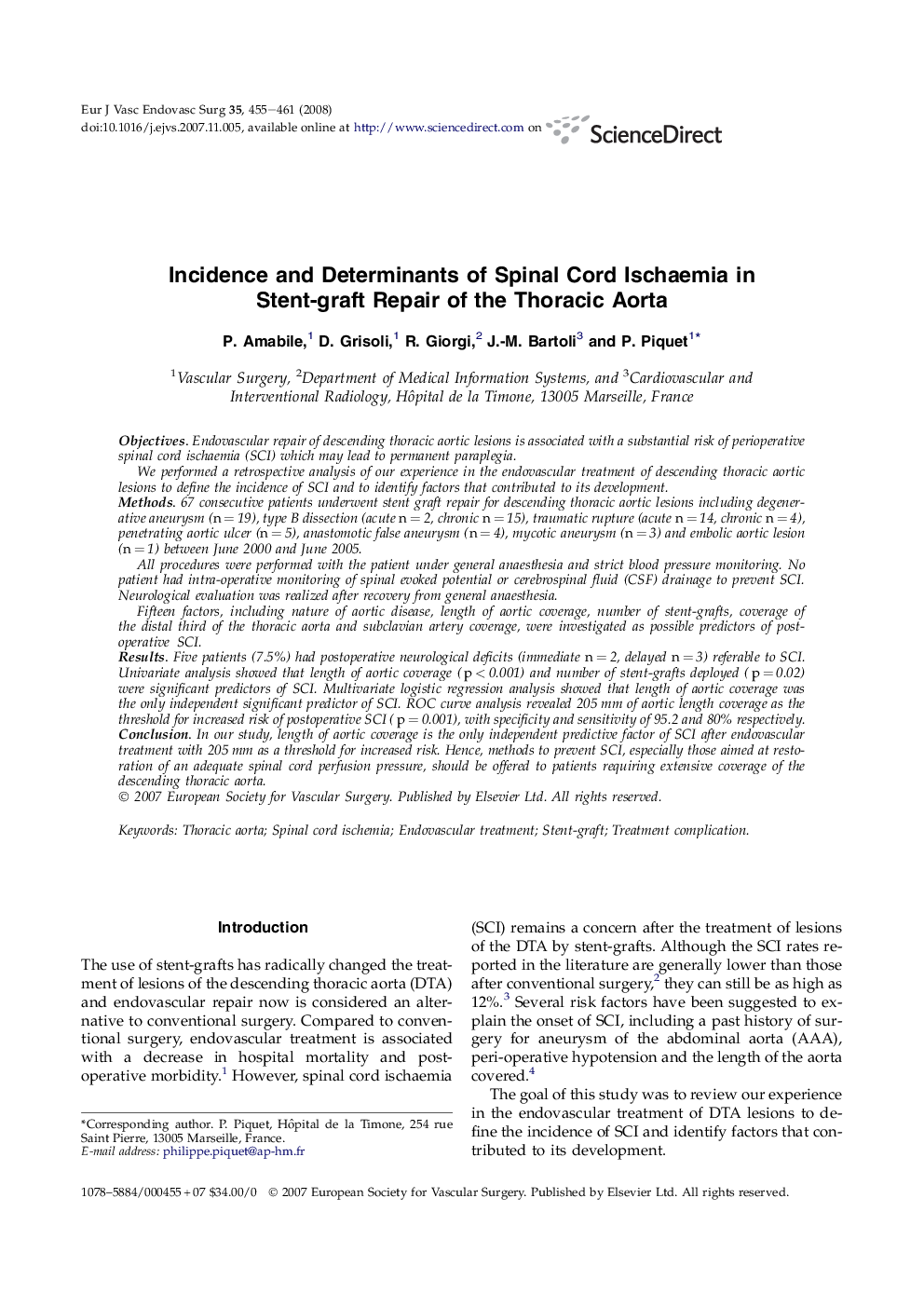| Article ID | Journal | Published Year | Pages | File Type |
|---|---|---|---|---|
| 2914018 | European Journal of Vascular and Endovascular Surgery | 2008 | 7 Pages |
ObjectivesEndovascular repair of descending thoracic aortic lesions is associated with a substantial risk of perioperative spinal cord ischaemia (SCI) which may lead to permanent paraplegia.We performed a retrospective analysis of our experience in the endovascular treatment of descending thoracic aortic lesions to define the incidence of SCI and to identify factors that contributed to its development.Methods67 consecutive patients underwent stent graft repair for descending thoracic aortic lesions including degenerative aneurysm (n = 19), type B dissection (acute n = 2, chronic n = 15), traumatic rupture (acute n = 14, chronic n = 4), penetrating aortic ulcer (n = 5), anastomotic false aneurysm (n = 4), mycotic aneurysm (n = 3) and embolic aortic lesion (n = 1) between June 2000 and June 2005.All procedures were performed with the patient under general anaesthesia and strict blood pressure monitoring. No patient had intra-operative monitoring of spinal evoked potential or cerebrospinal fluid (CSF) drainage to prevent SCI. Neurological evaluation was realized after recovery from general anaesthesia.Fifteen factors, including nature of aortic disease, length of aortic coverage, number of stent-grafts, coverage of the distal third of the thoracic aorta and subclavian artery coverage, were investigated as possible predictors of postoperative SCI.ResultsFive patients (7.5%) had postoperative neurological deficits (immediate n = 2, delayed n = 3) referable to SCI. Univariate analysis showed that length of aortic coverage (p < 0.001) and number of stent-grafts deployed (p = 0.02) were significant predictors of SCI. Multivariate logistic regression analysis showed that length of aortic coverage was the only independent significant predictor of SCI. ROC curve analysis revealed 205 mm of aortic length coverage as the threshold for increased risk of postoperative SCI (p = 0.001), with specificity and sensitivity of 95.2 and 80% respectively.ConclusionIn our study, length of aortic coverage is the only independent predictive factor of SCI after endovascular treatment with 205 mm as a threshold for increased risk. Hence, methods to prevent SCI, especially those aimed at restoration of an adequate spinal cord perfusion pressure, should be offered to patients requiring extensive coverage of the descending thoracic aorta.
